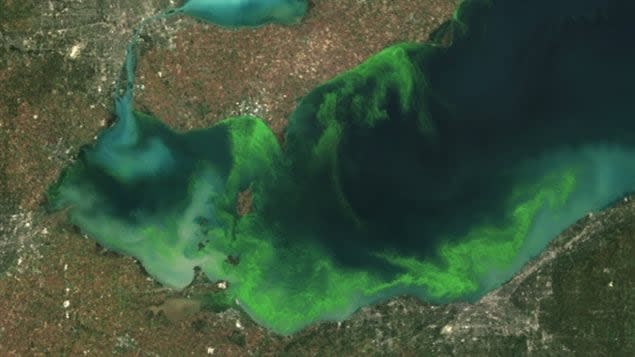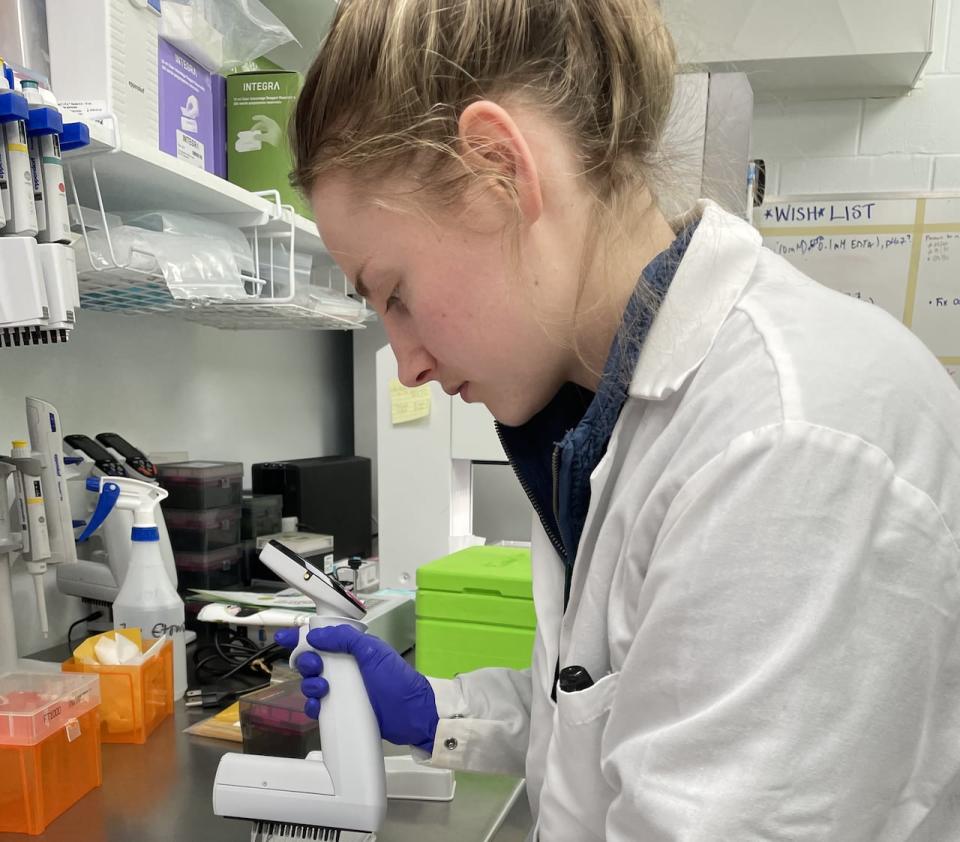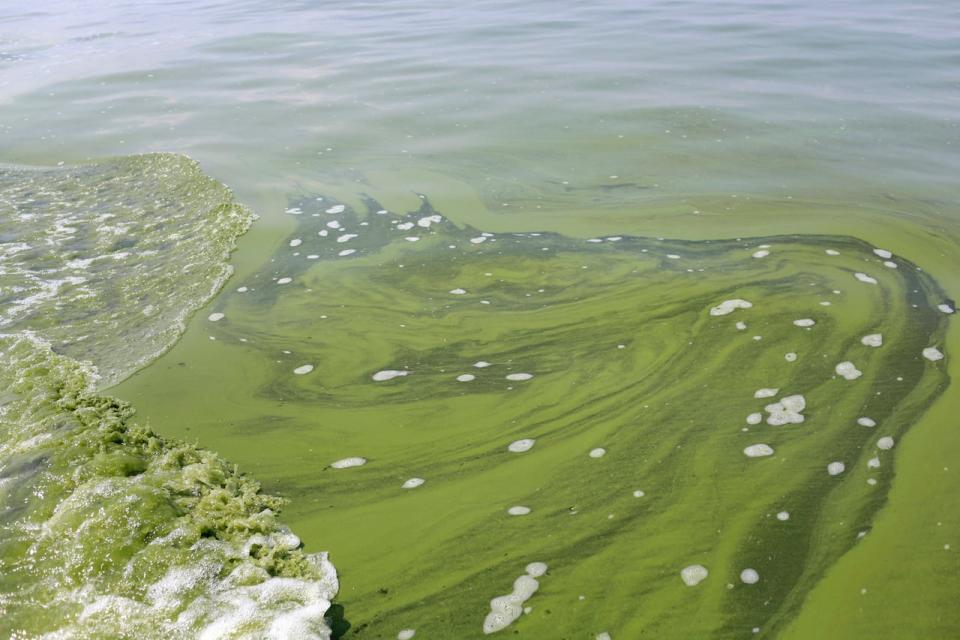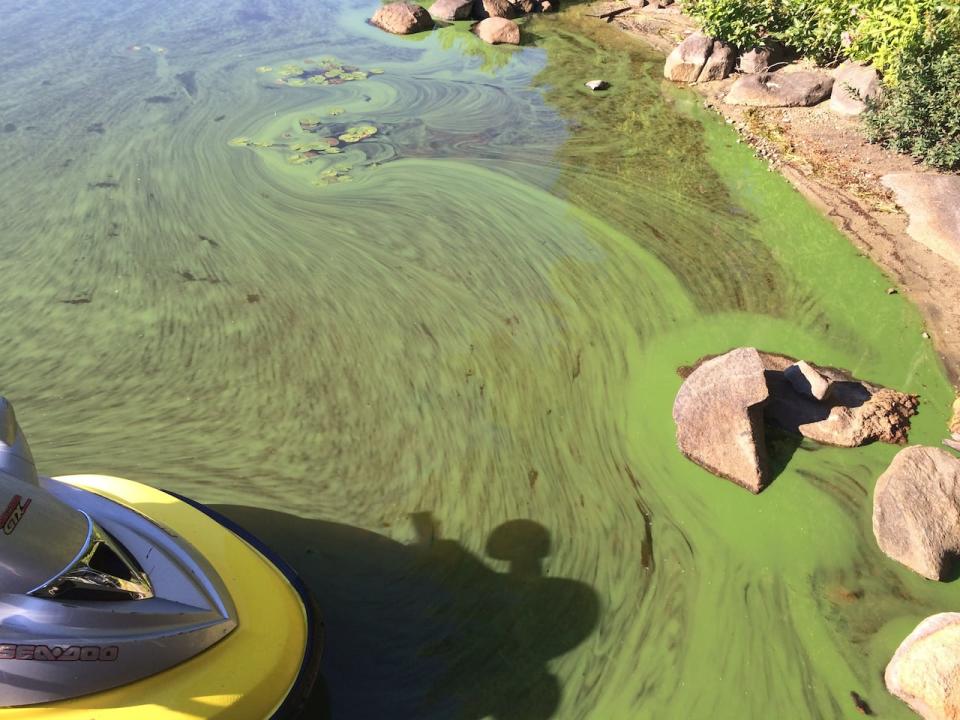Windsor researcher believes Pelee Island microbes could counter toxic algal blooms

Imagine sand-based microbes hungry for cyanotoxins — the poisonous product of harmful algal blooms.
That's what University of Windsor graduate Chelsea Salter studied for her masters degree in environmental sciences.
The goal is to determine if a microbial community in the sand-filled trenches of Pelee Island can be used as a water treatment application, Salter explains.
"We want to know if it's safe, if it's effective, and the kinetics of that reaction," Salter says.

Chelsea Salter, a researcher and masters degree graduate of the University of Windsor's environmental sciences program, works as a research laboratory technician. (Chelsea Salter)
It's been discovered that the public well waters of Pelee Island have a notable lack of microcystin contamination.
Microcystins are a specific family of toxins produced by freshwater cyanobacteria — more commonly known as blue-green algae. A potential carcinogen, microcystins are common across the western basin of Lake Erie.
However, it's not common in Pelee Island's water supply, even though Pelee Island draws its water directly from the lake.
The water flows through sand-filled trenches in which microbes degrade the toxins.

Algal bloom in Lake Erie near Toledo, Ohio, in August 2014. (Haraz N. Ghanbari/Associated Press)
Salter notes that she did not make that discovery, which happened around six years ago. Her work involved studying the details and mechanisms of the process: the genes that are involved and the metabolic breakdown.
"I can't take credit for it," Salter says. "But once I heard about the project, I just thought it was super cool."
"I believe that this is something that has been an adaptive response by the microbial community."
Salter further believes the phenomenon on Pelee Island is unique — the natural result of the resilient microbes being repeatedly exposed to microcystins over time.
Salter's involvement with the project ended last year. She's now working as a research lab technician for Agriculture and Agri-Food Canada.
She's optimistic about the future impact of the research.
"What I really wanted to show is that this microbial community has a lot of potential," Salter says. "It's something that we can implement that's very low cost, very efficient, hopefully very easy to put into what's already used at water treatment facilities."

Algal blooms in a freshwater lake in Ontario. (Muskoka Watershed Council)
Rene Shahmohamadloo, a post-doctorate researcher with the University of Guelph's College of Biological Science, agrees with Salter that the research is very interesting, and a step forward when it comes to dealing with harmful algal blooms.
"It is encouraging to see that (microcystins) do get rapidly absorbed in the sand and break down," said Shahmohamadloo, who is also an ecotoxicologist with the university's Department of Integrative Biology, and has studied the algal blooms of Lake Erie.
As for the usage of these microbes as a form of bio-remediation for blue-green algae, Shahmohamadloo said: "I think it's possible. But there needs to be work... I'd be curious to know: Do these microbial communities respond to other stressors in the Great Lakes?"
There are many other toxins produced by cyanobacteria besides the particular variant of microcystin that was the focus of the research, Shahmohamadloo pointed out.
"This shows promise in the lab, but now, let's go out in the field — where things get a lot more complex."

Rene Shahmohamadloo, a post-doctorate researcher with the University of Guelph's College of Biological Science. (CBC News)


